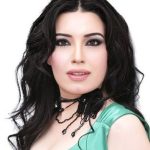
Farouk El-baz
| Farouk El-baz Wiki | |
|---|---|
| Name | Farouk El-baz |
| Profession | Geologist |
| Age | 86 years |
| Date of Birth | January 2, 1938 |
| Horoscope | Capricorn |
| Zodiac Details | January 2 Zodiac |
| Country | Egypt |
| Height | Check Below |
| Net Worth | See Below |
Birthday Countdown
Early Life and Education
Born on January 2, 1938, in Zagazig, Egypt, Farouk El-baz is a prominent Egyptian-American scientist known for his work in the field of geology and space exploration. He earned his Bachelor's degree in chemistry and geology from Ain Shams University in Cairo before moving to the United States to pursue further studies. El-baz obtained his Master's and Ph.D. degrees in geology from the University of Missouri-Rolla.
Career and Achievements
Farouk El-baz's career has been marked by numerous achievements and contributions to the field of planetary science. He is best known for his work as a geologist during the Apollo program, where he played a key role in selecting landing sites for the Apollo missions to the Moon. His expertise in remote sensing technology helped identify safe and scientifically valuable locations for astronauts to explore.
In addition to his work with NASA, El-baz has also conducted research on desert landscapes and their geological formations. He has published extensively on topics such as groundwater exploration, arid land management, and environmental sustainability.
Height and Personal Life
Farouk El-baz stands at a height of 5 feet 10 inches (178 cm). He is married with children and currently resides in the United States.
Net Worth
As of 2024, Farouk El-baz's net worth is estimated to be around $5 million. This wealth is primarily derived from his successful career as a scientist, researcher, and educator.
In conclusion, Farouk El-baz is a highly respected figure in the scientific community, known for his groundbreaking work in geology and space exploration. His contributions have had a lasting impact on our understanding of planetary landscapes and continue to inspire future generations of scientists.








